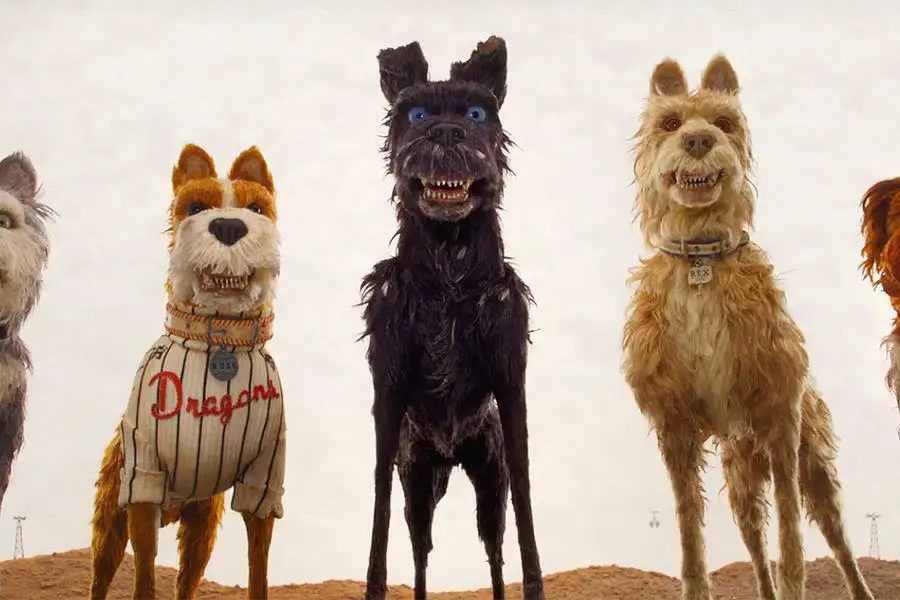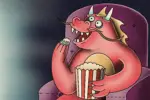If you were to make a list of independent filmmakers that college kids love to call their “Favorite Directors” in an attempt to seem sophisticated, Wes Anderson would be right up there with Quentin Tarantino and the Coen Brothers. Some of his films, like “The Grand Budapest Hotel” or “Moonrise Kingdom,” have found mainstream success, while others, like “Rushmore” and “Life Aquatic,” remain shrouded in an indie mist. Either way, Anderson’s sense of style, atmosphere and deadpan/quirky humor have awarded him a sea of cinephile sycophants who laud each new film of his as the second coming.
But Wes Anderson isn’t perfect. Like, at all. And for every three loyal fans, he has at least one equally loyal hater who finds a similarly pretentious pleasure in explaining to the world, via Reddit, that Wes Anderson is overrated and hack-y. Personally, I tend to lean on the side of the Wes Anderson fan, but my goal here is to find the middle ground. And when you strip away the hype (positive or negative), and get down to the movie-making mechanics, I believe one fact becomes crystal clear: “The Fantastic Mr. Fox” is Wes Anderson’s best film.
And lucky for us, his next film, “Isle of Dogs,” seems to be cut from the same cloth.
Wes Anderson Strengths and Weaknesses
First, let’s start off with what makes Wes Anderson awesome. The man has a gift for cinematography. His sets are vibrant and his characters are stylized perfectly to their respective traits. Take the opening to his third film, “The Royal Tenenbaums,”for instance.
The Tenenbaum household is a castle, complete with an over-the-top pink flag embroidered with a “T” that flaps pompously on the roof. The camera pans down, and on each floor we see a new Tenenbaum child. First, we see Margot, complete with emphatically thick eyeliner, reading her book wistfully. Then we see Chas in his miniature business suit, studiously doing financial calculations on his notepad. Another floor down we see the tennis prodigy and artist Richie, with his overlong hair and sweatband, drawing something animatedly.
https://www.youtube.com/watch?v=j1nkdotnN9Y
Anderson floods the scene with a deluge of colors and exposition about the children’s deeply dysfunctional relationship with their parents and each other, all while “Hey Jude” plays ironically in the background. In pretty much every Anderson movie it feels like every shot is a meticulously placed photograph. You could pause the movie randomly and frame the still image on your bedroom wall.
The density, vibrance and humor go a long way, but things seem to fall apart once Anderson’s writing takes over. His characters, defined by their sharp and intriguing quirks, don’t feel human at all. Despite the fact that Wes Anderson is notorious for having the most star-studded casts in the history of film, each line is delivered with an almost contrived sense of deadpan-ness.
Consider, again, “The Royal Tenenbaums.” The film presents its audience with some extremely heavy themes. Suicide, self-harm, familial contempt, drug use, failure: all these things should hit home, but the characters don’t feel real enough to be sympathetic. The children, now dysfunctional adults, “evolve” and grow closer together through their hardships without saying or doing anything that seems to actually address their conflict with each other.
For instance, Chas is overprotective of his children and holds his father in contempt for neglecting him when he was young. His father, Royal Tenenbaum, takes Chas’ children out on adventure and Chas scolds him for it. They find out Royal has been lying about a medical condition and Chas scolds him for that too. Then, when a family friend drives his car into a building and almost kills the Tenenbaums, Royal saves Chas’ children. Instantly, Chas not only fixes his relationship with his dad, but stops being overprotective of his children and admits he needs professional help himself. Royal eventually has a real heart attack that kills him and Chas is the only one to see, completing the symbolic arc. But what actually changed?
To be fair, this is a significant oversimplification of Chas’ arc, but my point is this: When real problems arise and these quirky, over-the-top characters don’t react at all like real people, how is the viewer supposed to care? How are we supposed to believe any of them have learned anything? How is their pain supposed to actually affect us? There’s a pretentious air to the whole thing that threatens to sacrifice humanity in exchange for atmosphere.
The Fantastic Mr. Fox Finds the Sweet Spot
Then you have “The Fantastic Mr. Fox,” Anderson’s first animated film (and a stop-motion film no less). All of Wes Anderson’s strengths are as present as ever: stunning visuals, funny dialogue and dense problems set in a strange, otherworldly atmosphere. But what is surprising about the film is that it seems Anderson was actually tailor-made for stop-motion animation this whole time.
None of his characters in any of his movies have ever felt as human as the animated animals that comprise the main cast. Mr. Fox is charming, but arrogant and addicted to the thrills of stealing chickens from local farmers. His wife is kind and loyal, but frustrated with her husband’s thrill-seeking. Their son, Ash, is awkward and introverted, and struggles desperately to find others’ acceptance as well as his own identity. When Mr. Fox decides to do “one last job” behind his wife’s back, the local farmers are angered and decide to attack the Fox family, destroying the homes of many neighboring animals as well.
Through their struggles, Mr. Fox sees his weaknesses and the cost of his hubris. Ash, on the other hand, is shown his strengths as he fights for his family and saves his romantic rival. And somehow, the fact that the characters are animated animals makes them more endearing. They are adorable and expressive. This leads me into my final and most important point.
It isn’t happenstance that Wes Anderson’s best film is animated. As I mentioned earlier, his atmosphere and characters feel “otherworldly” and this movie is no exception. But when the problem’s aren’t as real as suicide or drug use, when the problems are wrapped in cartoonishness, like stealing chickens because of primal instinct or battling a rat with electric wire to save your son’s life, the result is something effective.
These kinds of problems should be wrapped in a quirky atmosphere that doesn’t address their actual gravity, and what’s left is the core humanity of it all. Ash’s struggle with identity is an existential journey we have all been on in some way or another. Mr. Fox being torn between his passion and his family is relatable and cutting. Instead of using real problems to fuel an atmosphere, the medium allows Anderson to use an atmosphere to address real problems.
I would now encourage you to watch the trailer for “Isle of Dogs.” The set up is appropriately ridiculous. The visuals already look stunning. But most importantly, you can feel the absurdity already beginning to warm your heart with real, genuine emotion. Hopefully, Anderson is about to craft another masterpiece.

















